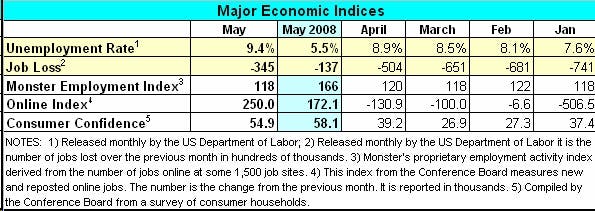Four years (give or take) into recruiting’s embrace of social media, it turns out that job boards are the most productive source of new hires.
Where social media sources register a barely discernible 1 percent of all hires, job boards produced 19 percent. That was matched only by internal transfers; even referrals came in lower — 16 percent.
These are among the surprising, and not so surprising, bits of data developed from a survey of 414 employers conducted by HR consultants Bersin & Associates. Compiled into the Talent Acquisition Factbook 2011, and authored by principal analyst Karen O’Leonard, the 100-page volume offers details on the recruiting metrics from employers as small as 100 workers to those with more than 10,000.
New insights on hiring metrics
Firm founder Josh Bersin said the genesis of the Factbook came from the company’s clients and conversations with many others since Bersin launched his talent acquisition practice a few years ago.
Employers, he said, “are anxious for a lot of information.” But there wasn’t much detailed bench-marking generally available. It wasn’t easy for employers to get answers to questions like: Are my recruiting costs in line with other companies? Am I spending my money effectively Am I getting the kind of results others are?
Now they can.
Some of the data — such as cost per hire, source of hire, time to fill — is widely available and in more detail. The Society for Human Resource Management has data on a number of important recruiting metrics, including cost per hire and time to fill, the traditional recruiting effectiveness measures. The Prinzo Group offers a series of reports on talent acquisition metrics. Annually, CareerXroads publishes a source of hire survey, based on responses from the firm’s roster of mostly Fortune 500 companies.
Bersin’s Factbook includes those types of metrics, but breaks down the responses by company size, and industry. In other areas, such as the report’s section on quality of hire metrics being used by employers, offers insights not readily available.
“Job boards … are not dead”
The report also draws conclusions and makes recommendations based on the data. Regarding job boards, for instance, author O’Leonard writes:
While the landscape is changing, job boards certainly are not dead. To the contrary, 81 percent of organizations say they will spend on job boards this year. However, we expect that organizations will use job boards more selectively, for certain types of positions and in certain geographies…”
(Incidentally, CareerXroads found job boards accounted for 24.95 percent of new hires in 2010. Referrals represented 27.5 percent in the CareerXroads report. The data, however, is not directly comparable since the report separated new hires from internal transfers, while Bersin’s survey asked about how all open positions were filled.)
Some of the more telling points in the Factbook deal with the use of social media. Despite all the chatter about social recruiting, most companies spend next to nothing on that strategy and, not surprisingly, make few hires from all their friends and fans and followers. “General social media,” as the Factbook describes sites not principally intended for professional networking, produced 1 percent of hires. Only the largest employers hired more — 2 percent.
O’Leonard notes that the reason for the low spend — 1 percent of the recruiting budget — is that social media’s costs “are negligible”, and that when money is spent there it typically comes out of a centralized marketing budget. “Converting candidates reached on social media to hires,” O’Leonard writes, “can be a time consuming-process.”
Social media hiring: “More hype than reality”
On the other hand professional networking sites like LinkedIn account for 10 percent of the hires, but companies only spend 3 percent of their external recruiting budgets there.
With all the energy being put into social media, the results reported by the surveyed companies seems meager at best. “A lot more hype than reality,” is Bersin’s assessment. However, when companies use sites like Facebook and Twitter as a marketing and brand building tool, they get results, he said. Social media, he says, “is being used effectively to build pipelines.” But when candidates decide to apply, they go to the company career site, he said.
One important, and oft-ignored area that the Bersin Factbook to its credit takes a stab at addressing is quality of hire. More than a few companies attempt to close the loop and track the performance of new hires back to the source of their application, as well as the recruiter who presented them.
“Recruiting teams can look at a number of measurements to determine new-hire quality, including new-hire performance assessments, hiring manager satisfaction, candidate satisfaction and new-hire retention,” O’Leonard writes. However, more than 25 percent of companies do nothing, she adds.
This section of the report details the kind of measurements companies do use, though the data here is limited to just a few charts specifically regarding use of performance reviews and turnover data. Still, it offers guidance to companies who want to become more data-driven, but aren’t sure what to measure or where they stand.
Help with allocating recruiting spending
That’s exactly how Bersin hopes employers make use of the Factbook. “First,” he says, “Are they in the right ballpark?” The data can be used to analyze their own spending, source of hire, and basic productivity measures.
Second, he says, the Factbook can help recruiting leaders determine how to allocate their sourcing dollars. “Really, Bersin, says, “what this is about is where do they fit. It gives them something to compare (to).”
Taking a broader look at the survey results, Bersin said, “It tells me that (recruiting) is expensive. It is not cheap to do it well.
“It tells me that companies are spending more right now… It may be even harder because there are so many candidates. It shows that there is a pretty substantial change in using social networks”
“It tells me that the recruiting industry is very complicated.”
